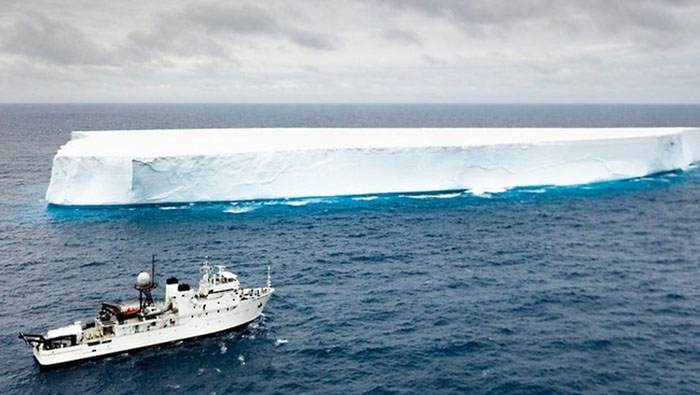
Berlin: Scientists have made the most precise map yet of the mountains, canyons and plains that make up the floor of Antarctica's encircling Southern Ocean.
Covering 48 million sq km, this chart for the first time details a new deepest point - a depression lying 7,432m down called the Factorian Deep.
Knowledge of the shape of the ocean's bottom is essential to safe navigation, marine conservation, and understanding Earth's climate and geological history.
Vast tracts of terrain have never been properly surveyed.
The International Bathymetric Chart of the Southern Ocean (IBCSO) has taken five years to compile and updates the first attempt at a comprehensive map, which was published in 2013.
The IBCSO project and others like it around the world are gradually filling in the gaps in our scant knowledge of the bottom of the world's oceans.
Ships and boats are being encouraged to routinely turn on their sonar devices to get depth (bathymetric) measurements; and governments, corporations, and institutions are being urged not to hide away data and put as much as possible into the public domain. This is paying dividends.
The new map covers all the Southern Ocean floor poleward of 50 degrees South. If you divide its 48 million sq km (18.5 million sq miles) into 500m grid squares, 23% of these cells now have at least one modern depth measurement.
That's a big improvement on nine years ago, BBC news reported.
Back then, IBCSO began only at 60 degrees South, and less than 17% of its grid boxes had a modern measurement.
Much of the information in the chart comes from the ice-strengthened ships that support scientific endeavours in Antarctica.
As these vessels shuttle back and forth between the White Continent and the likes of Chile, South Africa and Tasmania - their echosounders make a habit of surveying the submerged terrain below.
And this activity is increasingly coordinated, with research organisations from different nations working together to try to offset slightly the routes taken by their icebreakers.
Better seafloor maps are needed for a host of reasons. They are essential for safe navigation, obviously, but also for fisheries management and conservation, because it is around the underwater mountains that marine wildlife tends to congregate. Each seamount is a biodiversity hotspot.
In addition, the rugged seafloor influences the behaviour of ocean currents and the vertical mixing of water. This is information required to improve the models that forecast future climate change because it is the oceans that play a pivotal role in moving heat around the planet.
The remote and often inhospitable nature of the Southern Ocean means substantial sections of it are unlikely to get mapped unless there is dedicated undertaking. There's high hope that an emerging class of robotic vessels could be given this task in the years ahead.
The International Bathymetric Chart of the Southern Ocean is published in the journal Scientific Data.